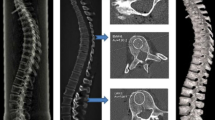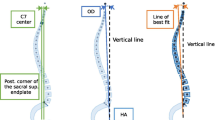Abstract
Fourth and fifth lumbar vertebrae were obtained at post mortem examinations of human subjects in the range 26 to 86 years and at the same time specimens were taken from the iliac crests for histological assessment of trabecular density (iliac crest score). After removal of pedicles and spinous processes the vertebrae were compressed in a testing machine to mechanical failure. The following values were obtained; breaking stress (load per unit area at failure), strain (percentage deformation) at failure and relative ash content (ash per unit volume). Strain at failure was independent of the size and strength of the vertebrae. The relative ash content and the iliac crest score were closely correlated. The relative ash content and the breaking stress both declined with increasing age, but the relation between them was not linear since the breaking stress fell more quickly than the ash content. Euler's equation for the buckling stress of a loaded column readily explains how in osteoporosis the reduction of the diameter of the vertical trabeculae and the loss of transverse ties cause loss of strength proportionately greater than the loss of osseous tissue. The results give no reason to suppose that in osteoporosis the quality of the osseous tissue is changed.
Résumé
Les quatrième et cinquième vertèbres lombaires sont prélevées post-mortem chez des sujets humains, âgés de 26 à 86 ans, et des échantillons de crête iliaque sont collectés simultanément pour établir histologiquement la densité des travées osseuses (index de la crête iliaque). Après avoir enlevé les pédicules et les apophyses épineuses, les vertèbres sont compressées dans une machine pour tester la résistance mécanique. Les valeurs suivantes sont déterminées: force de rupture (en poids par unité de surface au moment de la rupture), effort de rupture (en pourcentage de déformation) et contenu relatif en cendres (en cendres par unité de volume). L'effort de rupture est indépendant de la taille et de la force des vertèbres. Le contenu relatif en cendres et l'index de la crête iliaque sont en rapports étroits. Le contenu relatif en cendres et la force de rupture diminuent en fonction de l'âge, mais ce rapport n'est pas linéaire, car la force de rupture chute plus rapidement que le contenu en cendres. L'équation d'Euler pour une force courbe appliquée à une colonne chargée explique facilement comment, dans l'ostéoporose, la réduction de diamètre des travées verticales et la perte des attaches transversales sont responsables de la perte de force proportionellement plus élevée que la perte de tissu osseux. Les résultats ne permettent pas de supposer que, dans l'ostéoporose, la qualité du tissu osseux est altérée.
Zusammenfassung
Die vierten und fünften Lumbalwirbelknochen wurden von Obduktionen menschlicher Leichen innerhalb der Altersgrenzen von 26 und 86 Jahren gewonnen. Gleichzeitig wurden Proben von der Beckenschaufel entnommen, um Maßstäbe für die Bälkchendichte festzulegen (Beckenschaufelzahl). Nach Entfernung der Ansätze und Dornfortsätze wurden die Wirbelknochen in einer Prüfungsmaschine komprimiert, um mechanisches Versagen zu bestimmen. Folgende Werte wurden erhalten: Bruchbelastung (Gewicht pro Einheitsfläche bei Bruch), Beanspruchung (Prozentsatz von Deformation) bei Bruch und relativer Aschegehalt (Asche pro Einheitsvolumen). Die Beanspruchung bei Bruch war unabhängig von Größe und Stärke der Wirbelknochen. Zwischen dem relativen Aschegehalt und der Beckenschaufelzahl bestand eine enge Verbindung. Der relative Aschegehalt und die Bruchbelastung wurden mit fortschreitendem Alter kleiner, jedoch war die Beziehung zwischen diesen beiden Faktoren nicht linear, da die Bruchbelastung rascher als der Aschegehalt abnahm. MitEulers Gleichung für die Verbiegungsbelastung einer geladenen Säule läßt sich leicht erklären, auf welche Weise bei der Osteoporose die Reduktion des Durchmessers der Wirbeltrabekeln und der Verlust der transversen Verbindungen einen verhältnismäßig größeren Stärkeverlust hervorruft, als durch Verlust von Knochengewebe erklärt werden kann. Die Ergebnisse geben keinen Anlaß zu der Vermutung, daß bei der Osteoporose die Qualität des Knochengewebes eine Veränderung erfährt.
Similar content being viewed by others
References
Barnett, E., andB. E. C. Nordin: The radiological diagnosis of osteoporosis. Clin. Radiol.11, 166–174 (1960).
——: The problem of thin bones. Brit. J. Radiol.34, 683–692 (1961).
Beck, J. S., andB. E. C. Nordin: Histological assessment of osteoporosis by iliac crest biopsy. J. Path. Bact.80, 391–397 (1960).
Bell, G. H., D. P. Cuthbertson, andJ. Orr: Strength and size of bone in relation to calcium intake. J. Physiol. (Lond.)100, 299–317 (1941).
Birkenhager-Frenkel, D. J., J. J. Groen, J. A. Bedier de Prairie, andF. G. J. Offerijns: A simple physico-chemical method of assessment of osteoporosis. Voeding22, 634–639 (1961).
Bryant, F. J., andJ. F. Loutit: Human bone metabolism deduced from strontium assay. Atomic Energy Res. Est. AERE-R 3718, 1–50 (1961).
Caldwell, R. A., andD. H. Collins: Assessment of vertebral osteoporosis by radiographic and chemical methods post-mortem. J. Bone Jt Surg. B43, 346–361 (1931).
Casuccio, C.: An introduction to the study of osteoporosis. Proc. roy. Soc. Med.55, 663–668 (1962).
Mueller, K. H., A. Trias, andR. D. Ray: Bone density and composition. J. Bone Jt Surg. A48, 140–148 (1966).
Nordin, B. E. C.: Osteoporosis. Adv. metabol. Disorders1, 125–151 (1964).
—,J. MacGregor, andD. A. Smith: The incidence of osteoporosis in normal women: Its relation to age and the menopause. Quart. J. Med.35, 25–38 (1966).
Rivera, J.: Human bone metabolism inferred from fall-out investigation. Nature (Lond.)207, 1330–1332 (1965).
Swanson, S. A. V., andM. A. R. Freeman: Is bone hydraulically strengthened? Med. biol. Engng.4, 433–438 (1966).
Weir, J. B. de V., G. H. Bell, andJ. W. Chambers: The strength and elasticity of bone in rats on a rachitogenic diet. J. Bone Jt Surg. B31, 444–451 (1949).
Author information
Authors and Affiliations
Rights and permissions
About this article
Cite this article
Bell, G.H., Dunbar, O., Beck, J.S. et al. Variations in strength of vertebrae with age and their relation to osteoporosis. Calc. Tis Res. 1, 75–86 (1967). https://doi.org/10.1007/BF02008077
Received:
Issue Date:
DOI: https://doi.org/10.1007/BF02008077




